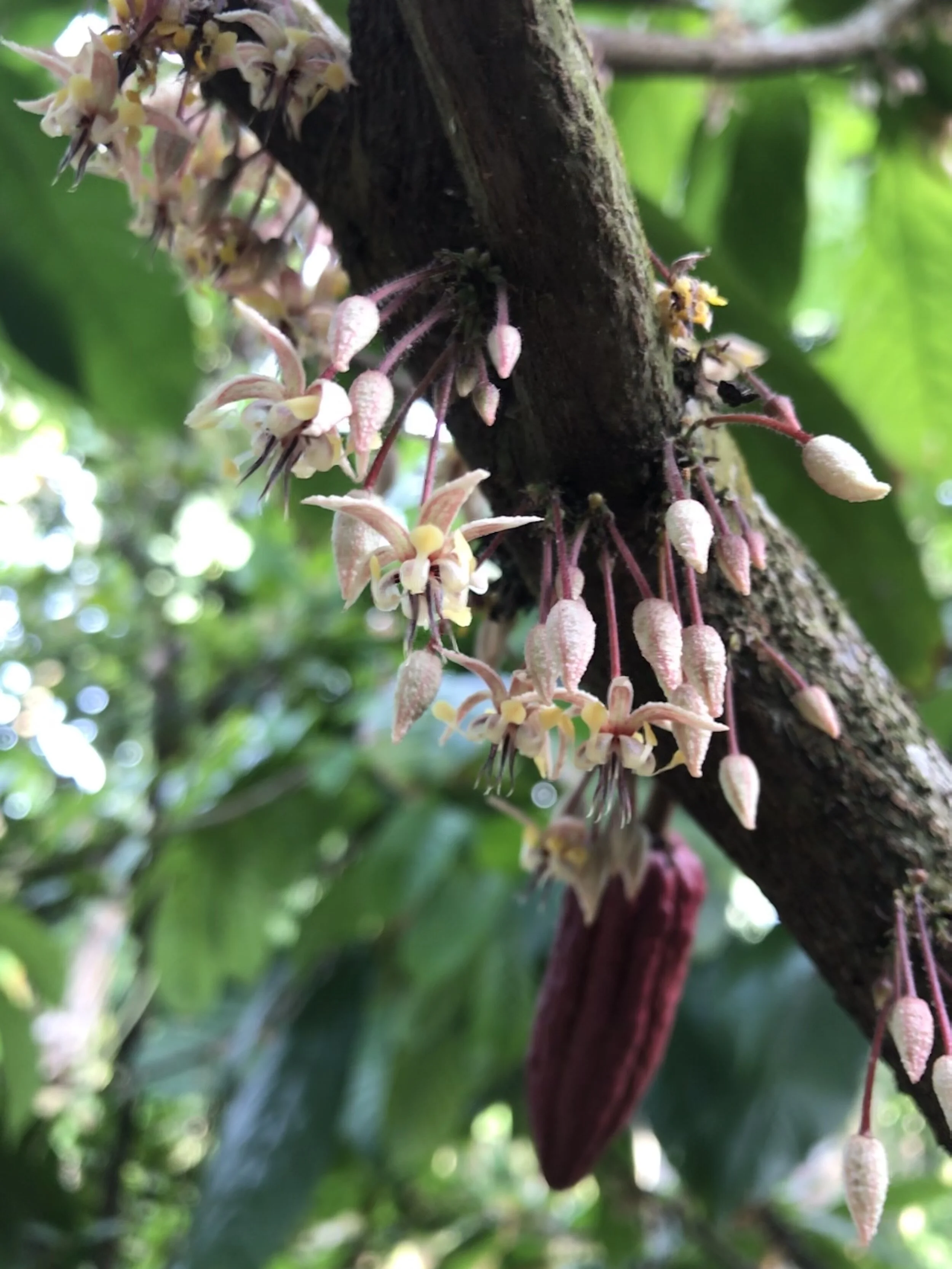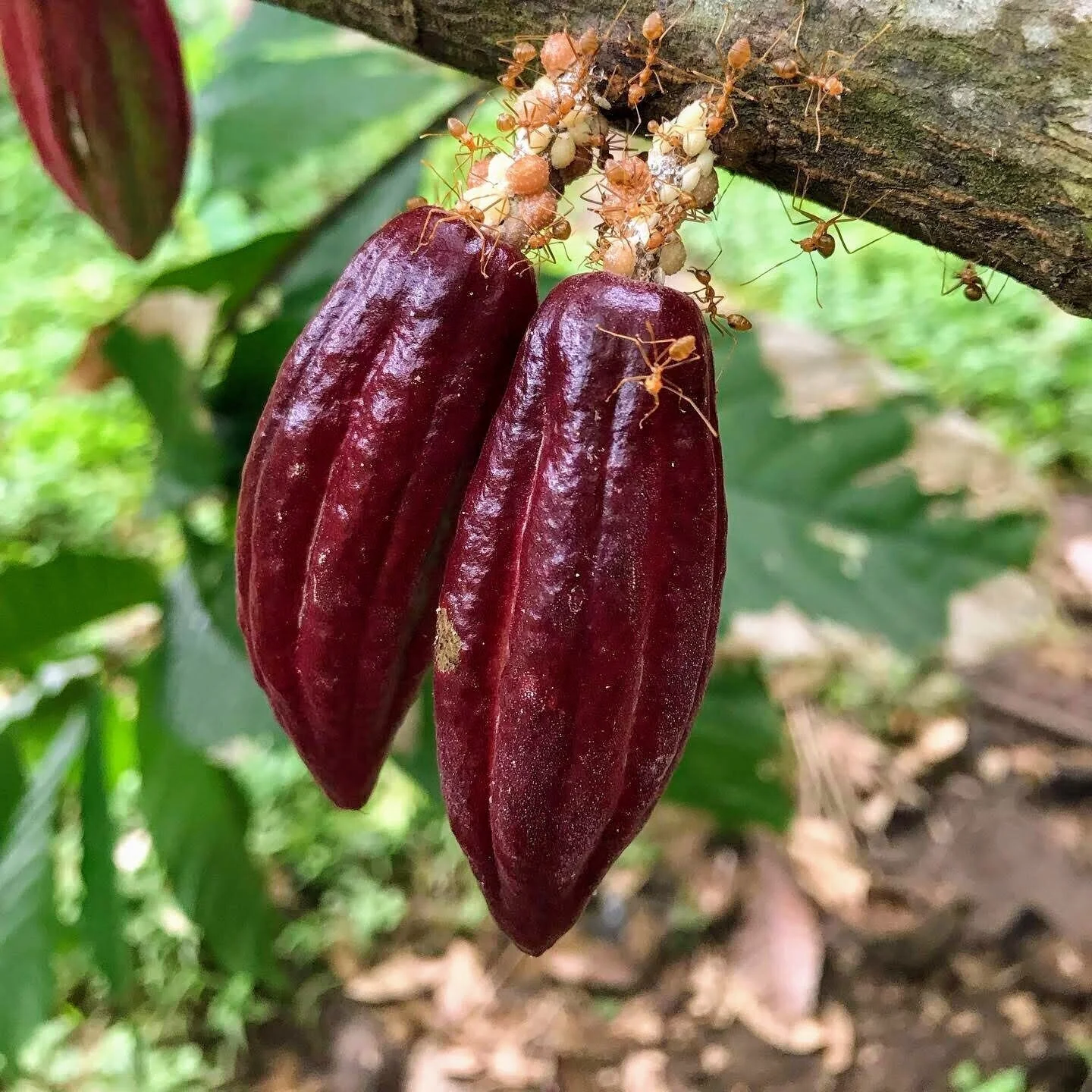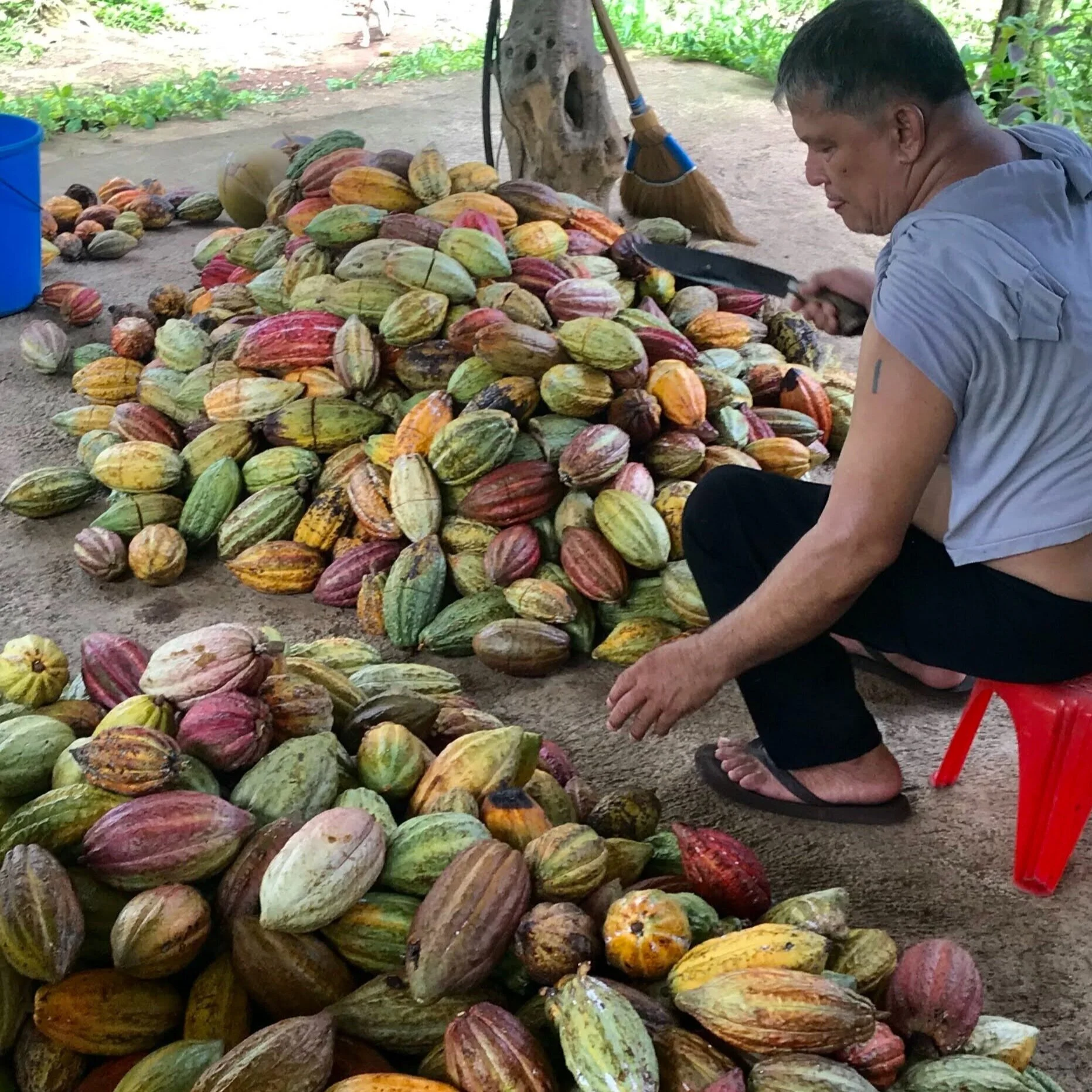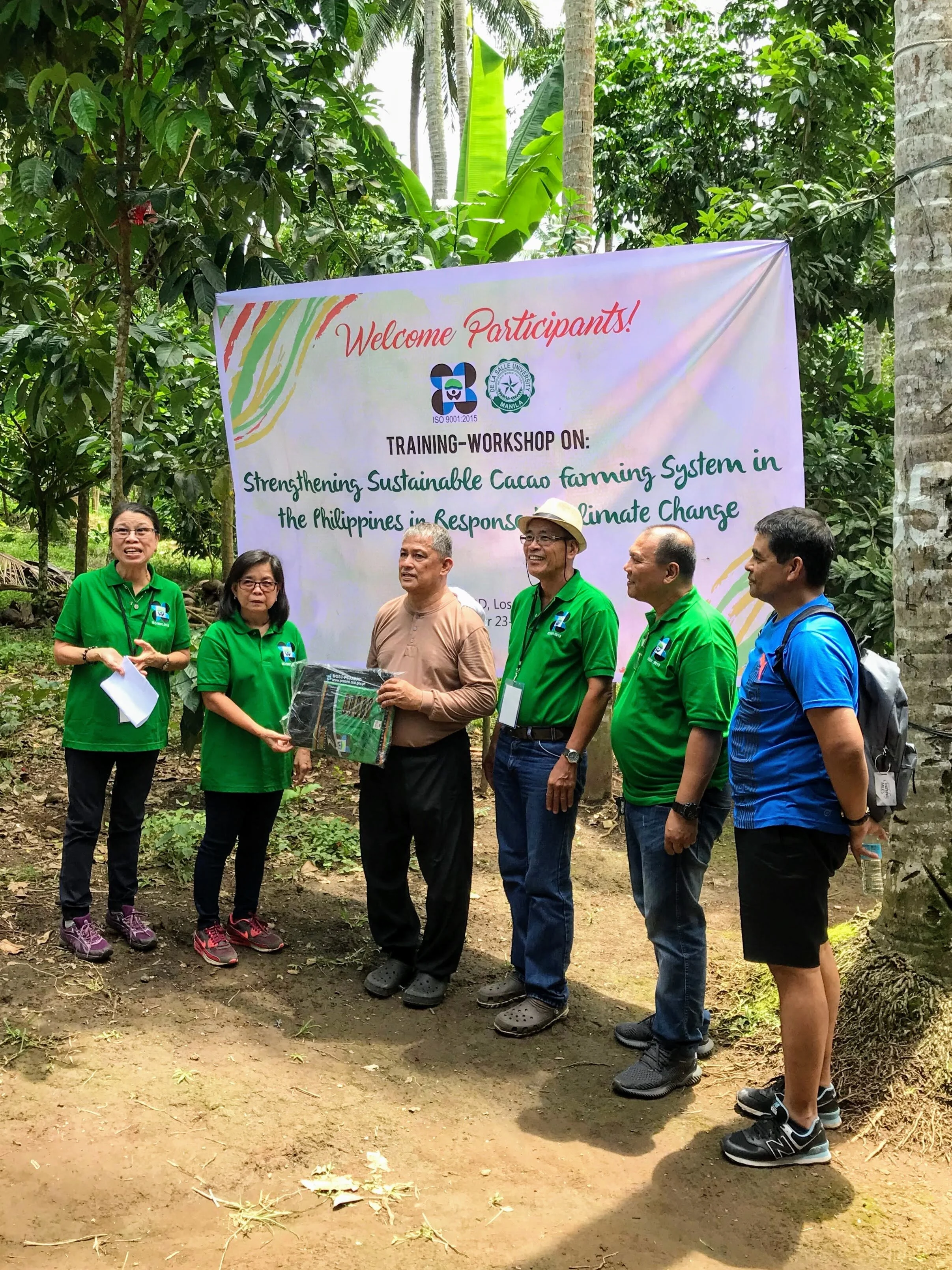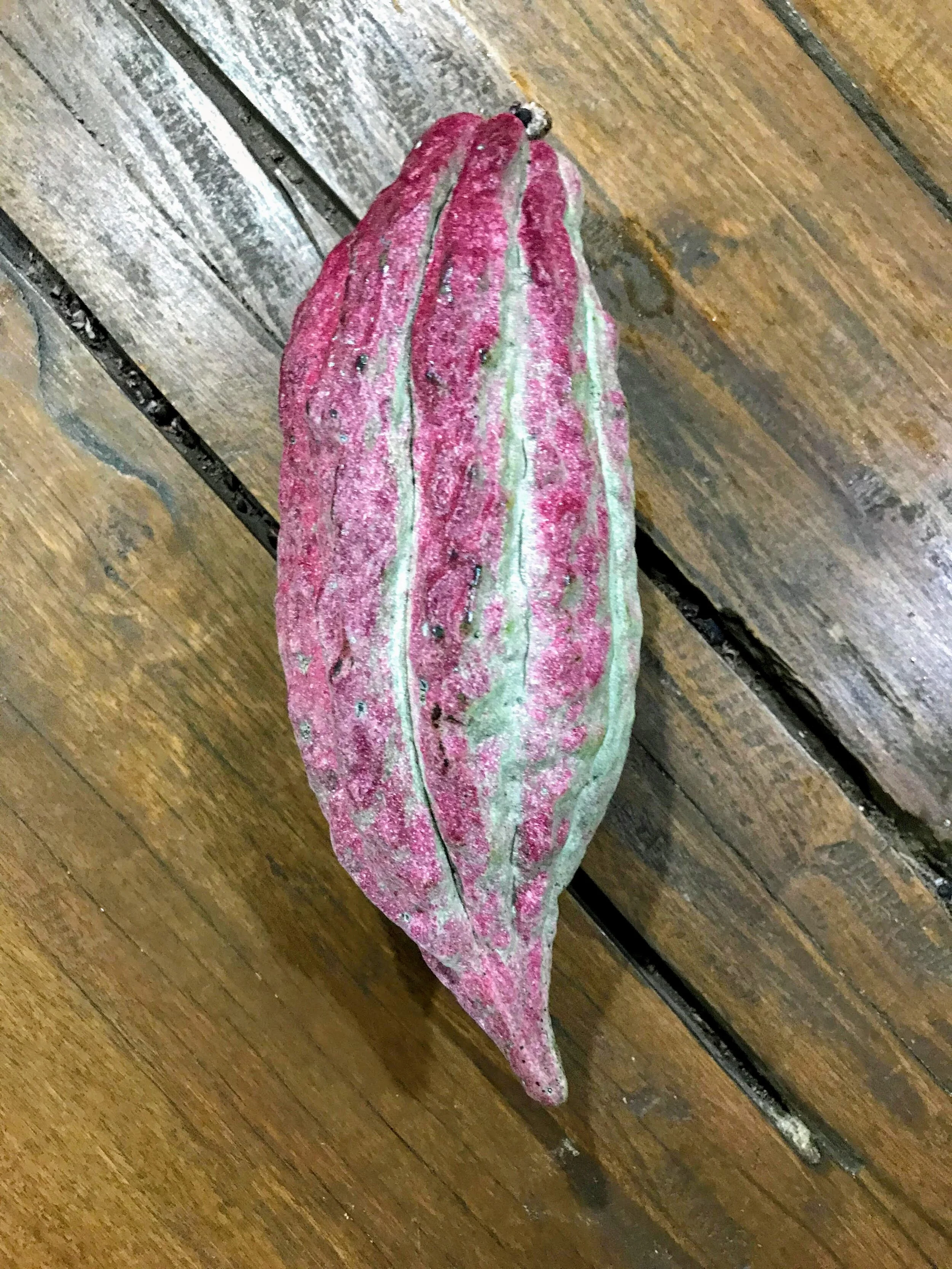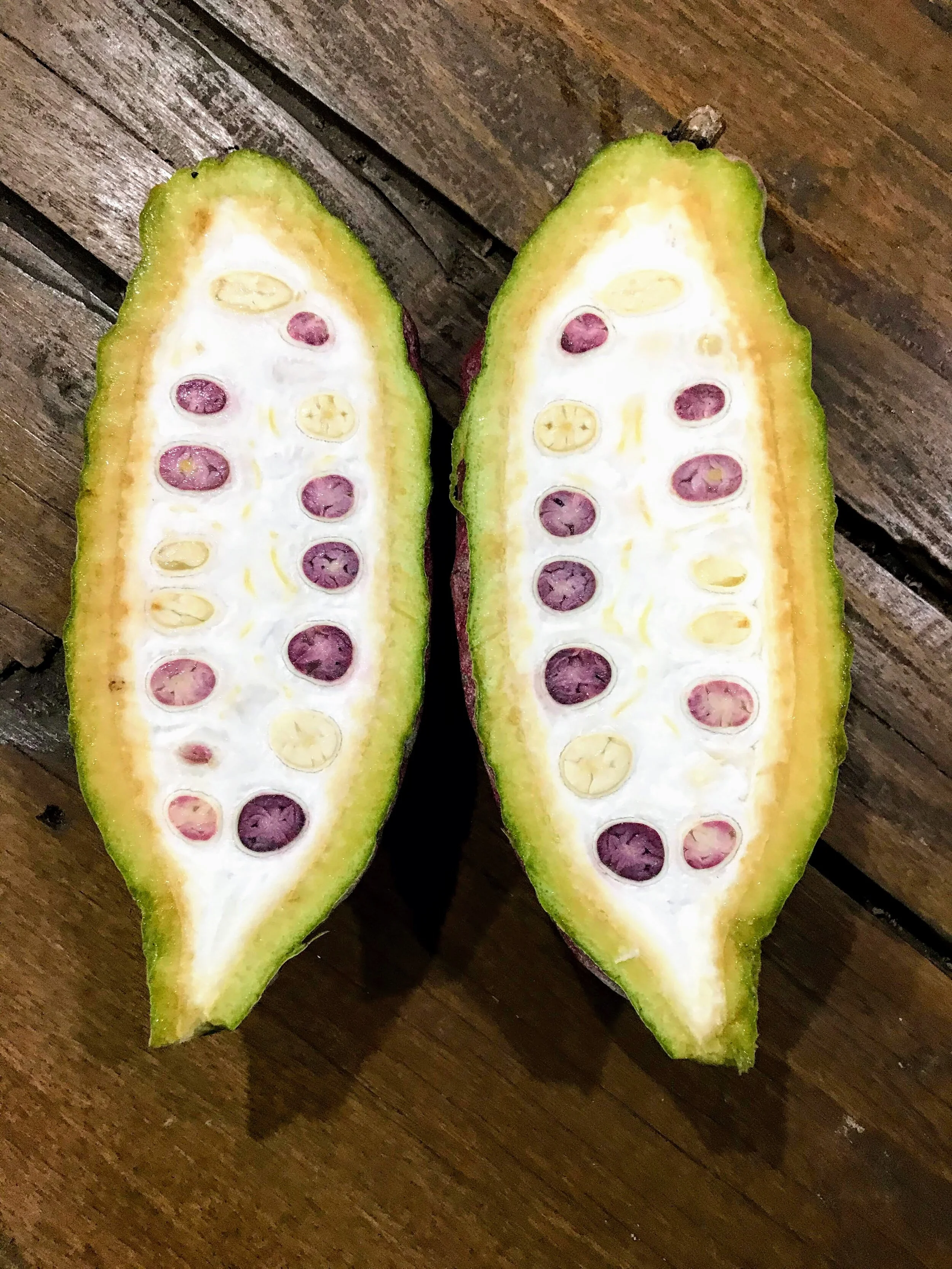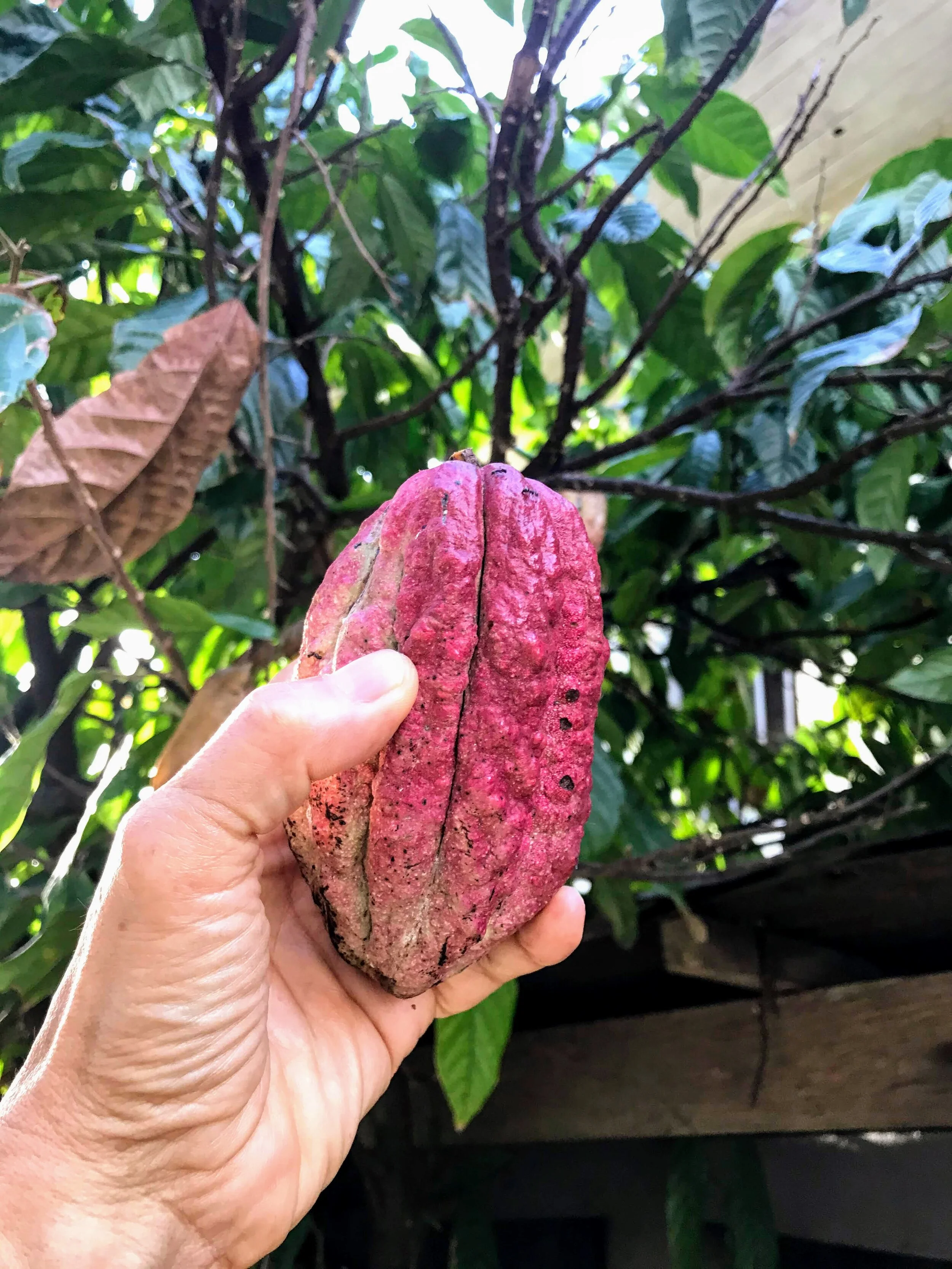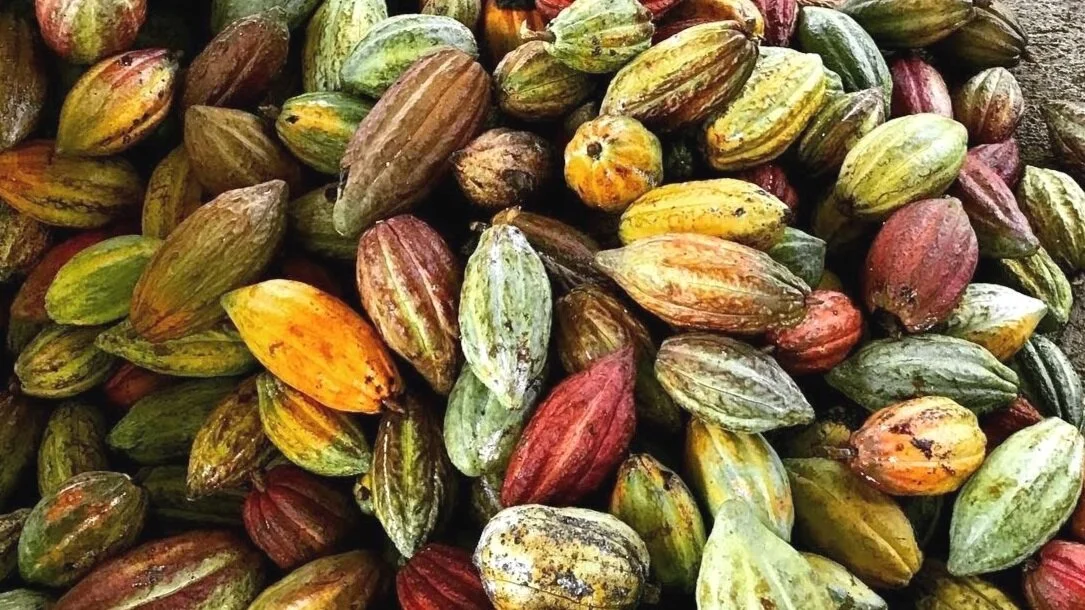
Our Cacao
Our cacao comes mainly from the farm of Ka Ino Sulibit in Liliw, Laguna. Ka Ino started planting cacao trees in 2016 after he realized that he needed another crop that could bring in additional income to replace what was lost during the disaster brought about by the cocolisap bug infestation of his coconut trees. At around the same time, the Department of Agriculture was pushing for the intercropping of high valued crops, like cacao, with coconut and other fruit trees.
Ka Ino's Farm at Barangay Ibabang Palina in Liliw, Laguna.
A flowering cacao tree. These flowers are actually quite small and only a very small fly called a midge can pollinate it. It takes around six months for some of these flowers to be ready for harvest.
Red ants feeding on the secretions of mealybugs that are harmful to cacao. It is important to know what are the beneficial and harmful insects in the farm for pest management.
Cacao is so amazing it expresses itself in different colors. They produce fruits year-round. A tree can have fruits at different stages of ripeness. To tell if a cacao pod is ready to harvest, scratch the skin. If you see green then stop. It's not ready. If you see white or yellow then it's ready for harvest.
Newly harvested cacao pods being opened. Notice the diversity of colors. Knowledge of how to identify ripeness is critical so that they are harvested at the right time.
The Department of Science and Technology (DOST) in Los Banos, Laguna conducted an on-site training at Ka Ino's Farm in Sep 2019 on integrated pest management, disease control, tree management/pruning.
An old cacao tree in the outskirts of town. Cacao trees used to be commonly grown in home backyards in town, but are now rare.
The criollo is the variety of cacao that Spain originally brought to the Philippines from Mexico. They are usually identified as having white beans, warty skin and a pointed nipple-like ending, They are described as mildly acidic, mild taste and rarely bitter.
A cacao pod from an old cacao tree with warty skin and a pointed ending.
The more commonly propagated cacao varieties right now have purple seeds. This one has a combination of white and purple seeds.
Another old cacao tree on the side of a road outside of town.
A professor from the University of the Philippines in Los Banos has identified this cacao tree located in the middle of town as a possible criollo variety.
White beans inside a possible criollo variety.


